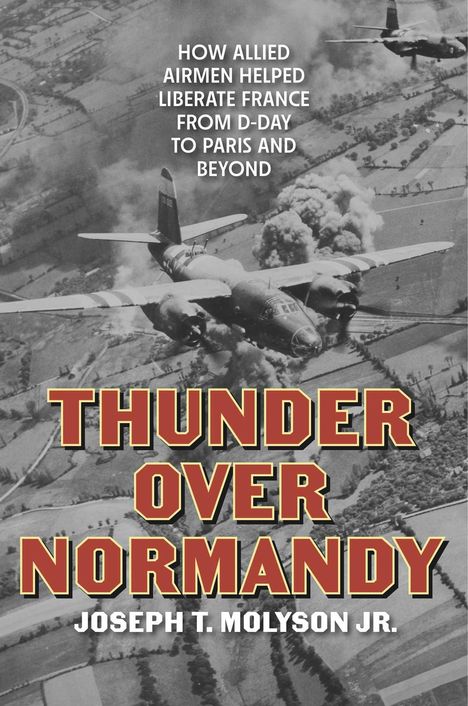Joseph T Molyson Jr: Thunder Over Normandy, Gebunden
Thunder Over Normandy
- How Allied Airmen Helped Liberate France from D-Day to Paris and Beyond
Sie können den Titel schon jetzt bestellen. Versand an Sie erfolgt gleich nach Verfügbarkeit.
- Verlag:
- Globe Pequot Publishing, 02/2026
- Einband:
- Gebunden
- Sprache:
- Englisch
- ISBN-13:
- 9780811777780
- Artikelnummer:
- 12313315
- Umfang:
- 352 Seiten
- Gewicht:
- 712 g
- Maße:
- 229 x 152 mm
- Stärke:
- 22 mm
- Erscheinungstermin:
- 3.2.2026
- Hinweis
-
Achtung: Artikel ist nicht in deutscher Sprache!
Klappentext
They dropped from the skies, roared over the hedgerows, and turned the tide of history---this is the untold story of the airmen who helped liberate France.
By June 1944, Allied air forces were ready to unleash hell on the Germans in occupied France. Massive numbers of bombers and fighters had been assembled in the United Kingdom, as well as more than one million troops poised to invade the continent. Thunder Over Normandy tells the story of the air campaign that began on D-Day, June 6, 1944, and culminated in the liberation of France---one of the largest, most complex, and most successful aerial operations in history.
In April 1944, Allied air forces in Europe---including the vaunted U. S. Eighth Air Force and RAF Bomber Command---were placed under Dwight Eisenhower's Supreme Headquarters Allied Expeditionary Force and given a twofold mission to lay the groundwork for D-Day: destroy the Luftwaffe's battle strength and isolate Normandy from reinforcements. American and British heavy bombers completed these tasks with devastating effectiveness.
D-Day began with the midnight launching of 1, 200 transports to drop American and British paratroopers and gliders behind enemy lines in Normandy. In a monumental effort, the U. S. 82nd and 101st Airborne Divisions landed behind Utah Beach and fought for towns like Carentan; the British 6th Airborne seized Pegasus Bridge and other crossings near Caen. Toward dawn, 1, 000 bombers hammered German positions along the coast, just ahead of the troops who stormed the beaches.
As the fighting moved inland during the next two months, Allied fighters and fighter-bombers swarmed in to provide close support for the ground forces slogging through the hedgerows of Normandy. The bombers continued to strike German industry, but priority was now given to destroying V-1 and V-2 rocket sites as part of Operation Crossbow. Bombers were also used tactically in conjunction with ground operations, including the heavy bombardment that preceded the breakout from Normandy in late July.
By the time Paris was liberated in August 1944, air power---thousands of sorties, hundreds of thousands of tons of bombs---had contributed mightily to Allied victory. Thunder Over Normandy details the air operations that made this happen, from thundering bomb runs and low-level strafing attacks to paratrooper drops, glider flights, and wheeling dogfights with the Luftwaffe. During the summer of 1944, as this stirring account vividly shows, the Allies were truly masters of the air.


